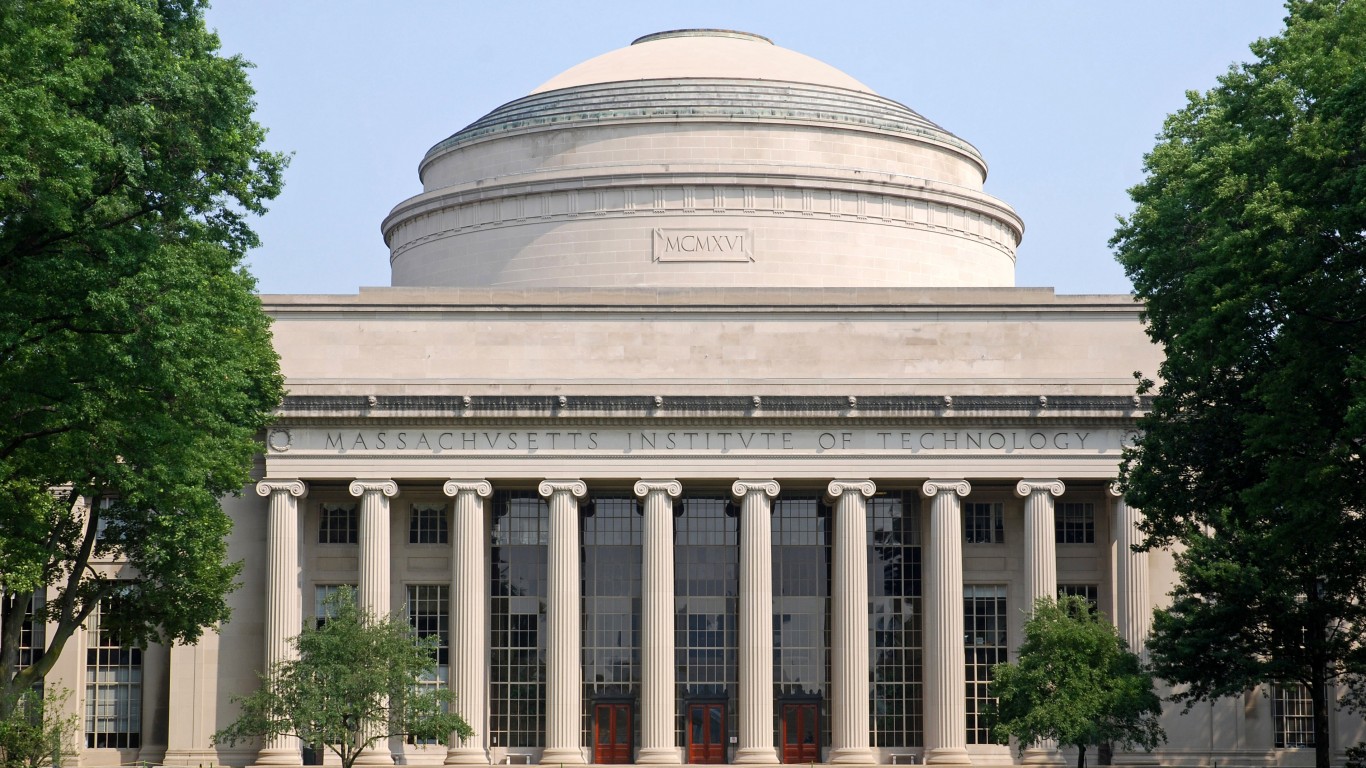
Total overall student debt in the United States reached $1.6 trillion in June 2019, six times higher than in 2004. While students are having a hard time paying for college, getting a degree can still be a worthwhile investment, depending a great deal on where one goes to school.
Some colleges are better known for their graduates’ high earning potential and low debt. Attendees at these schools tend to earn relatively high incomes 10 years after enrollment without taking on an inordinate amount of debt. Acceptance to these schools has become highly sought after and typically only a small share of applicants are accepted. This exclusivity further cements their reputation as one of the top colleges in the country.
To determine the best college in America, 24/7 Wall St. created an index based on three measures: acceptance rate, average earnings of past students 10 years after enrollment, and median debt at graduation.
While a degree from one of the top picks on the list is likely to bring better job opportunities to graduates, choice of major also significantly affects employment and earning potential. Students who study in technological and scientific fields are much less likely to be unemployed and much more likely to have relatively higher incomes. Graduates with degrees in other fields, such as education and communications, are more likely to be unemployed and to earn relatively lower incomes. These are the college majors that pay off the least.
Like virtually every other part of life, the U.S. college system now looks very different than it did last year as a result of the COVID-19 pandemic. Many colleges opted to offer only online instruction for the fall 2020 semester. Others decided to offer in-person classes in spite of the outbreak, only to report hundreds and even thousands of coronavirus cases among staff and students shortly after reopening the school.
Click here to see the 20 best colleges in America.
The best college in America is the Massachusetts Institute of Technology, located in Cambridge, Massachusetts. Its admission rate for 2018–2019 was 6.7%, calculated by a total number of applicants (21,706) against the number of students accepted (1,464). The average annual earnings of students from MIT 10 years after enrollment is $153,600. By contrast, the median debt at graduation was $12,500. The annual net cost of attendance at MIT was $20,465 a year. The average SAT score needed to get in was 1545 out of 1600.
This is the methodology: To determine the best colleges in America, 24/7 Wall St. created that index based on acceptance rate, average earnings 10 years after enrollment and median debt at graduation. We normalized the measure using min-max normalization, and each was given equal weighting. We only considered four-year, degree-granting postsecondary U.S. institutions.
The acceptance rate, or the percentage of applicants admitted to each institution, was calculated using admission and application data from the National Center for Education Statistics (NCES) Integrated Postsecondary Education Data System (IPEDS) for the 2018–2019 school year. Schools with a lower acceptance rate were ranked higher in our index.
As for the average earnings for students working and not enrolled 10 years after entry, higher earnings were scored higher in our index. Earnings after attendance data came from the U.S. Department of Education (USDE) College Scorecard program for the most recent year. It includes those who graduated from these institutions as well as those who did not.
Data on median debt for those who have completed their degrees at a particular institution also came from the USDE College Scorecard and is for fiscal years 2017 and 2018. Higher debt was penalized in our index.
We also looked at total attendance (undergraduate and graduate), net price, graduation rate and geographic information from the NCES College Navigator program. Net price refers to the total annual cost of attendance as calculated by the NCES, based on tuition, housing and other fees, likelihood of receiving financial aid and so on. Each figure is for the most recent available for each institution. Tuition prices for various situations (e.g., in or out of state, housing or commuting), as well as SAT/ACT percentiles, were also included from IPEDS for the 2018–2019 school year.
Click here to see the college majors that will pay off the least.
Cash Back Credit Cards Have Never Been This Good
Credit card companies are at war, handing out free rewards and benefits to win the best customers. A good cash back card can be worth thousands of dollars a year in free money, not to mention other perks like travel, insurance, and access to fancy lounges. See our top picks for the best credit cards today. You won’t want to miss some of these offers.
Flywheel Publishing has partnered with CardRatings for our coverage of credit card products. Flywheel Publishing and CardRatings may receive a commission from card issuers.
Thank you for reading! Have some feedback for us?
Contact the 24/7 Wall St. editorial team.

